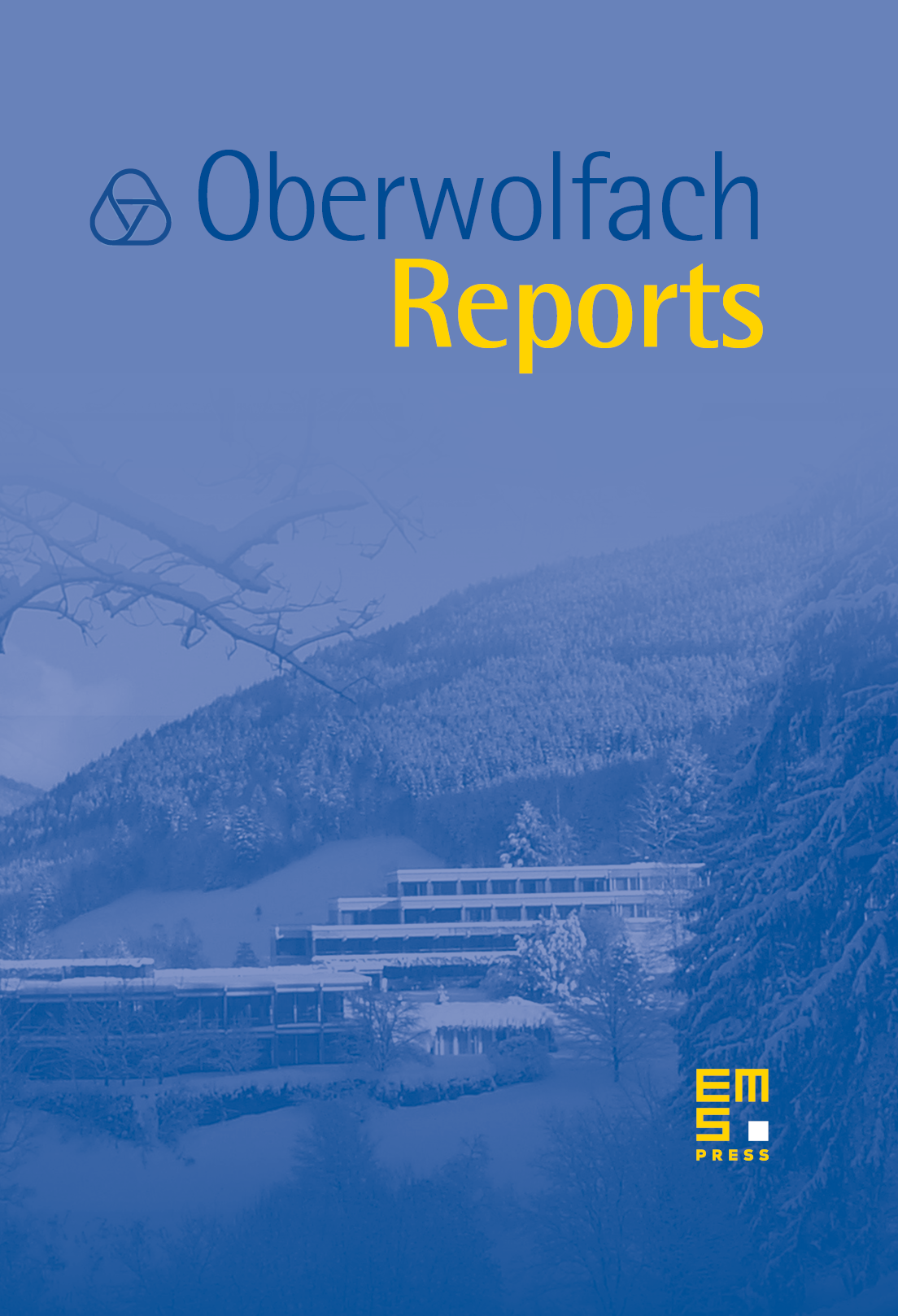Mini-Workshop: Numerical Upscaling: Theory and Applications
Achi Brandt
Weizmann Institute of Science, Rehovot, IsraelRichard E. Ewing
Texas A&M University, College Station, United StatesOleg Iliev
ITWM, Kaiserslautern, Germany

Abstract
This Mini-Workshop was attended by sixteen participants from five countries, representing different scientific schools and generations. Fifteen presentations (each accompanied with intensive discussions), two common round table discussions, and an uncountable number of discussions in couples, triples, etc. – the week flew as an instant. Mixing different generations – leading scientists working from years in the field, and ones who just finished PhD and came full with promising ideas and enthusiasm – provided a basis for versatile discussion of each question, for generating new ideas and for immediate attempts to apply these idea for solving the problems discussed. Blackboard discussions, sheets of paper, fast coding and demonstration on the laptops of results from computations – any and all ways of discussing, arguing, convincing: this is how the workshop looked.
Multiscale problems, due to their importance for many branches of science and industry, attract significant attention of the mathematical community. The main targets of this workshop were the numerical aspects of the multiscale problems: integrating numerical algorithms with asymptotic homogenization theory when the latter is applicable, and developing numerical approaches for multiscale problems with nonseparable scales. The last is especially important. Many multiscale problems are heterogeneous at each scale, and no small parameter can be introduced there. For such problems the equations at all scales are coupled, and the one way, fine-to-coarse scale procedure is not applicable. Instead, an (iterative) coupled solution at all scales is required. The mathematical studies of coupled multiscale problems are still far from the level which is achieved in the field of the asymptotic homogenization, and this has to be compensated for by intensive research. The most active mathematical research in the field of numerical upscaling is currently carried out in two directions: upscaling based on multigrid methods, and upscaling based on multiscale finite element method. Both, MG and multiscale FEM, provide a suitable framework for solving coupled multiscale problems.
Various general and particular questions were discussed during the workshop.
Among the general questions, special attention deserves the need of classification of the multiscale problems with respect to the goals seeked: For example: i) mathematical model at the fine scale is known and the solution is sought at the fine scale (coarse scale serves only to accelerate the solution procedure); ii) mathematical model at the fine scale is known, but the solution is sought at the coarse scale only (fine scale has to provide information about the model and the effective properties of the coarse scale), etc.
Another hot topic for discussions is when the scales can be separated and when not (depending on the geometry, process parameters, etc.). In particular, examples for problems with nonseparable scales, arising in Geoscience, were presented. The case when the scales can not be separated is the most difficult one, and there is no alternative to the numerical upscaling here. How to solve problems with nonseparable scales – with AMG-type approach, or with multiscale FEM, or with a combination of both; with overlapping or without overlapping for cell problems, etc., – all these questions were intensively discussed during the workshop, and they still need to be further discussed aiming at breaking the complexity of the multiscale problems considered.
Further interesting topics discussed there were:
- Different approaches for deriving coarse scale equations: based on truncated asymptotic expansions, starting from variational principles, etc.
- Different approaches for calculating effective coefficients of the coarse scale equations: matrix-dependent prolongation in multigrid; solving overlapping or non-overlapping local problems in multiscale and heterogeneous FEM, etc.
- How to put together analytical and numerical approaches for solving the auxiliary or the cell problems. How to benefit from the similarity between algebraic approaches (AMG agglomeration, approximate total reduction, etc.) and upscaling approaches (MsFEM, HMM, etc).
- How to combine the solution on a fine scale for a quasi-steady variable with transient computations on a coarse scale for other variables. Example from multiphase flow in porous media was presented when pressure is calculated once on the coarse scale, while contamination transport in time is simulated on a coarser scale.
- Define benchmark problems with separable and unseparable scales to test different approaches.
Some of the discussed questions are reflected in the presented abstracts, others need further research and we expect that they will appear in forthcoming papers.
Cite this article
Achi Brandt, Richard E. Ewing, Oleg Iliev, Mini-Workshop: Numerical Upscaling: Theory and Applications. Oberwolfach Rep. 2 (2005), no. 2, pp. 1127–1176
DOI 10.4171/OWR/2005/20